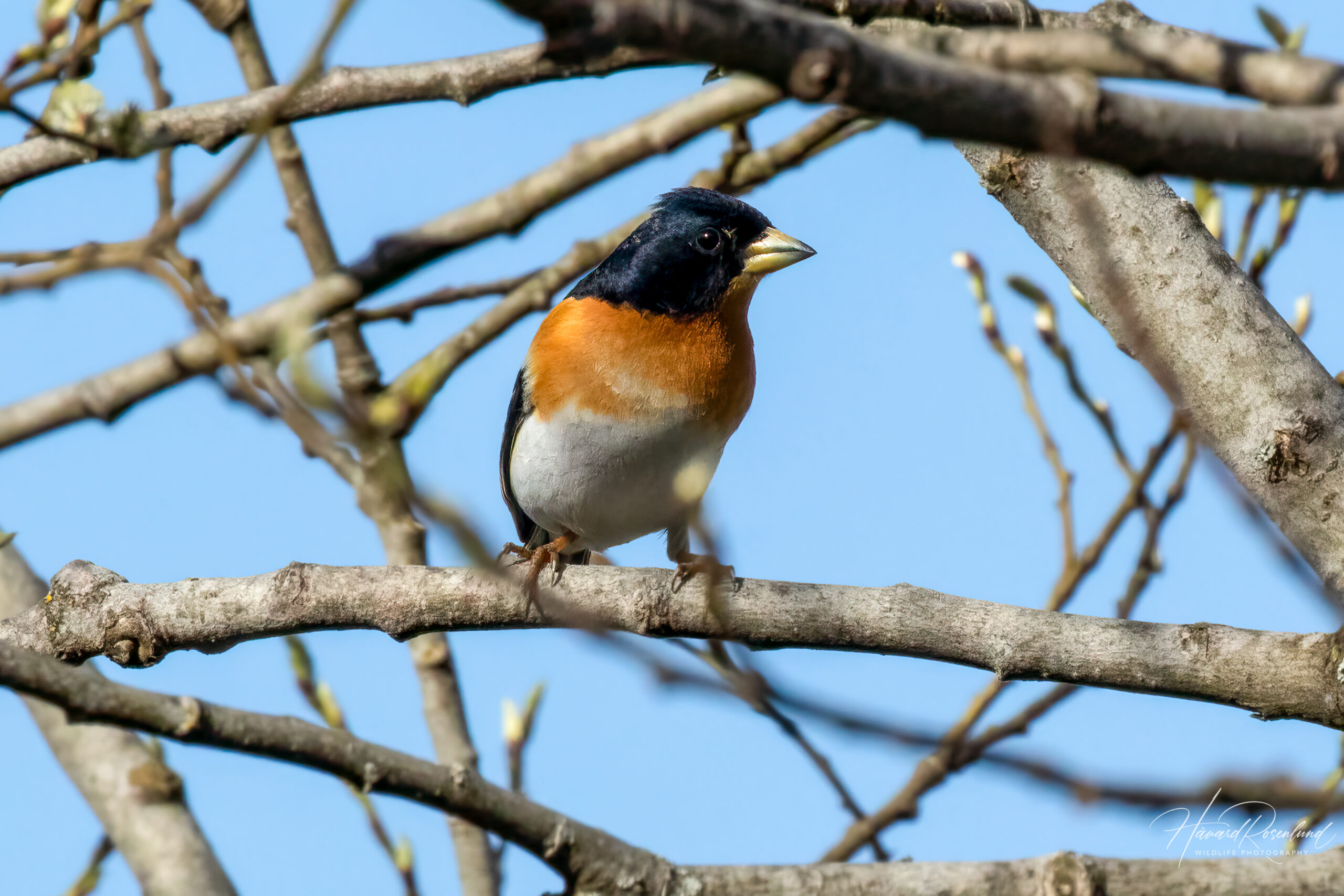Description
The brambling (Fringilla montifringilla) is a colorful finch with a wide range, breeding in the taiga and birch forests of Scandinavia, Siberia, and northern Asia. It can be identified by its orange breast and shoulders, white belly, and a distinct black head, back, and tail in males during the breeding season. Females and non-breeding males have more subdued colors, with a mottled brown and black back and less vivid orange hues. Bramblings are approximately 14–16 cm (5.5-6.3 in) in length, similar in size and form to the common chaffinch (Fringilla coelebs), a close relative, but the two species have distinctly different plumages.
Diet & habitat
Bramblings typically prefer birch woodlands and open conifer forests during the breeding season, and are found in deciduous forests, farmlands, parks, and gardens during migration and winter, forming large flocks often mixed with chaffinches. They feed on seeds, especially beech mast, during the winter. In the breeding season, their diet shifts to insects, catering to the nutritional needs of their chicks.
Migration
Bramblings winter in southern Europe, the Middle East, and South and East Asia, with some reaching North Africa. They migrate southward in September and October and return to their breeding grounds in April and May. In Norway, some bramblings are resident year-round, particularly along the coast. During winter, they form large flocks, sometimes numbering in the millions, a spectacular sight at key roosting sites. The largest known winter roost, located in Switzerland, once contained an estimated 70 million bramblings.






